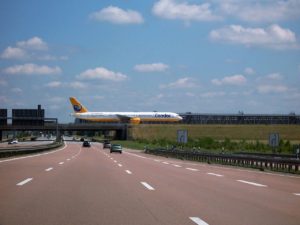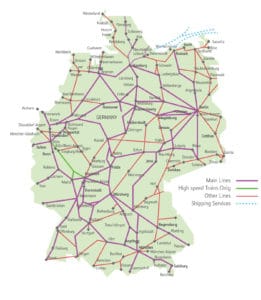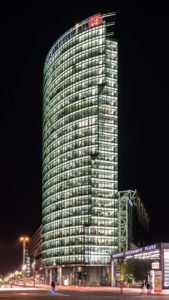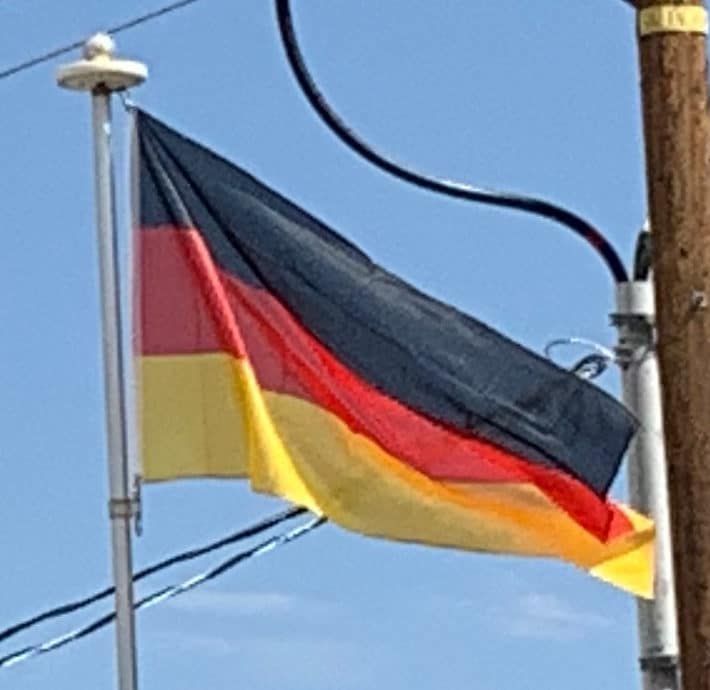
The national roads in Germany are called Bundesstraßen (federal roads). Their numbers are usually well known to local road users, as they appear (written in black digits on a yellow rectangle with black border) on direction traffic signs and on street maps. A Bundesstraße is often referred to as “B” followed by its number, for example “B1”, one of the main east-west routes. More important routes have lower numbers. Odd numbers are usually applied to north-south oriented roads, and even numbers for east-west routes. Bypass routes are referred to with an appended “a” (alternative) or “n” (new alignment), as in “B 56n”.
Other main public roads are maintained by the Bundesländer (states), called Landesstraße (country road) or Staatsstraße (state road). The numbers of these roads are prefixed with “L”, “S” or “St”, but are usually not seen on direction signs or written on maps. They appear on the kilometre posts on the roadside. Numbers are unique only within one state.
The Landkreise (districts) and municipalities are in charge of the minor roads and streets within villages, towns and cities. These roads have the number prefix “K” indicating a Kreisstraße.
Rail:
Germany features a total of 43,468 km railways, of which at least 19,973 km are electrified (2014).

Deutsche Bahn (German Rail) is the major German railway infrastructure and service operator. Though Deutsche Bahn is a private company, the government still holds all shares and therefore Deutsche Bahn can still be called a state-owned company. Since its reformation under private law in 1994, Deutsche Bahn AG (DB AG) no longer publishes details of the tracks it owns; in addition to the DBAG system there are about 280 privately or locally owned railway companies which own an approximate 3,000 km to 4,000 km of the total tracks and use DB tracks in open access.
Railway subsidies amounted to €17.0 billion in 2014 and there are significant differences between the financing of long-distance and short-distance (or local) trains in Germany. While long-distance trains can be run by any railway company, the companies also receive no subsidies from the government. Local trains however are subsidised by the German states, which pay the operating companies to run these trains and indeed in 2013, 59% of the cost of short-distance passenger rail transport was covered by subsidies. This resulted in many private companies offering to run local train services as they can provide cheaper service than the state-owned Deutsche Bahn. Track construction is entirely and track maintenance partly government financed both for long and short range trains. On the other hand, all rail vehicles are charged track access charges by DB Netz which in turn delivers (part of) its profits to the federal budget.

High speed rail started in the early 1990s with the introduction of the Inter City Express (ICE) into revenue service after first plans to modernize the rail system had been drawn up under the government of Willy Brandt. While the high speed network is not as dense as those of France or Spain, ICE or slightly slower (max. speed 200 km/h) Intercity (IC) serve most major cities. Several extensions or upgrades to high speed lines are under construction or planned for the near future, some of them after decades of planning.
